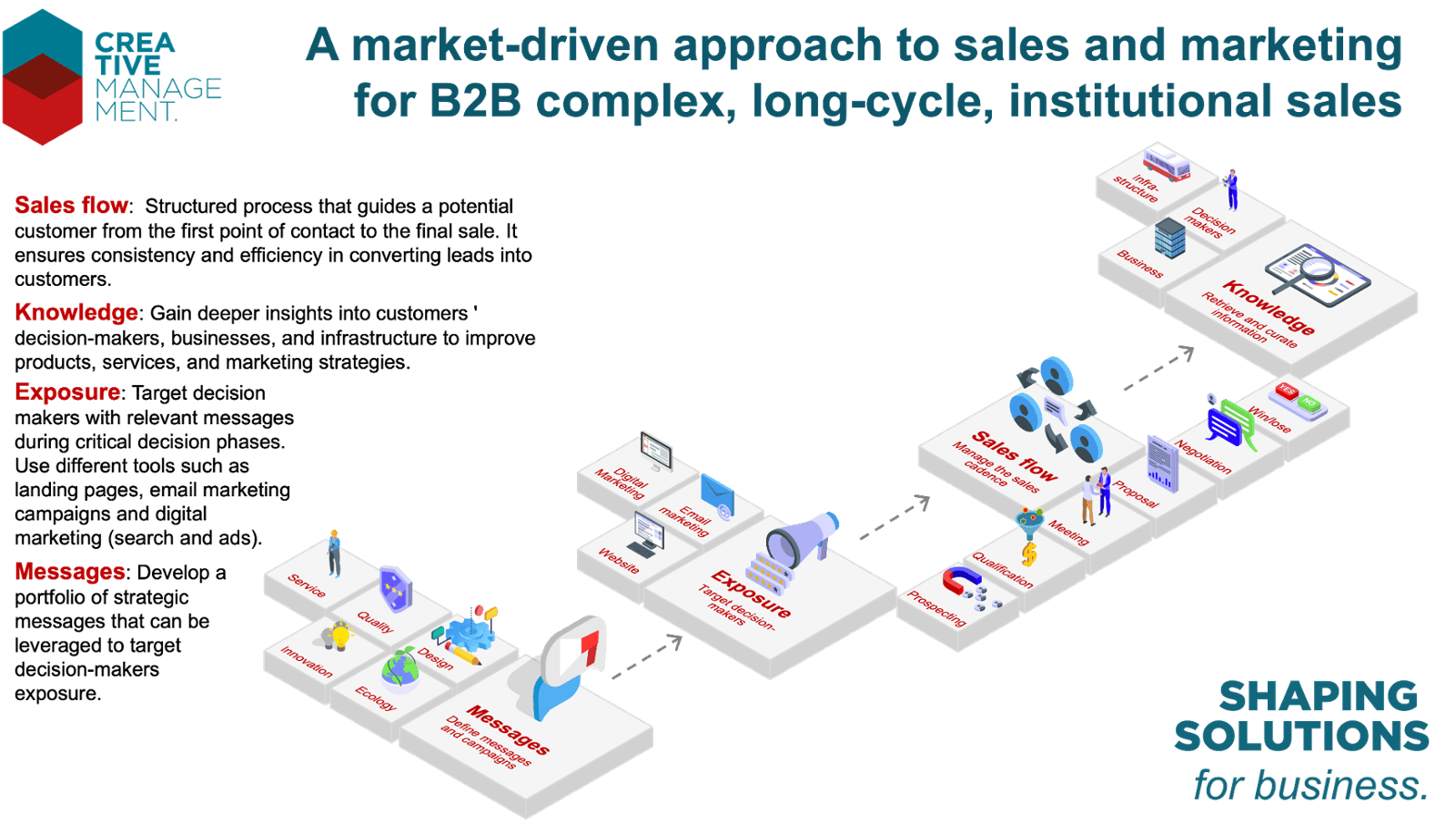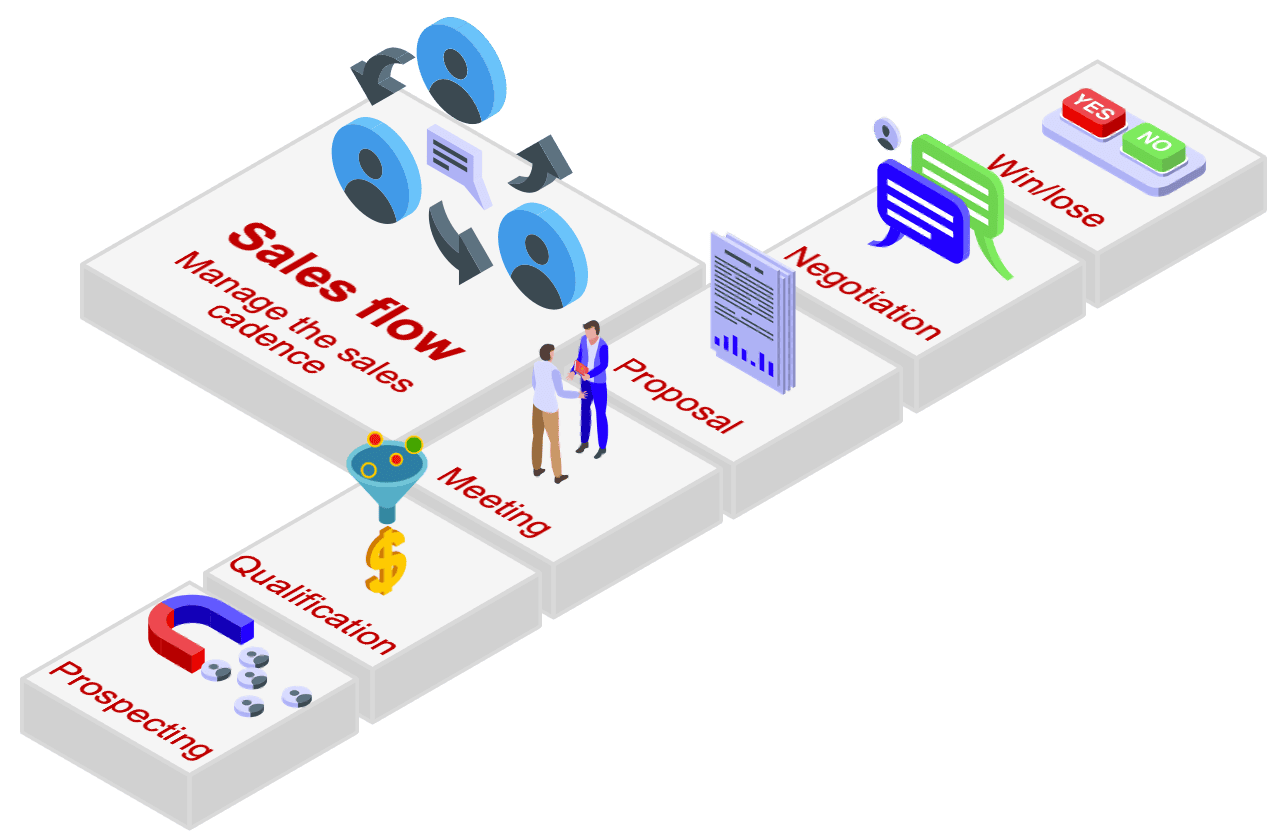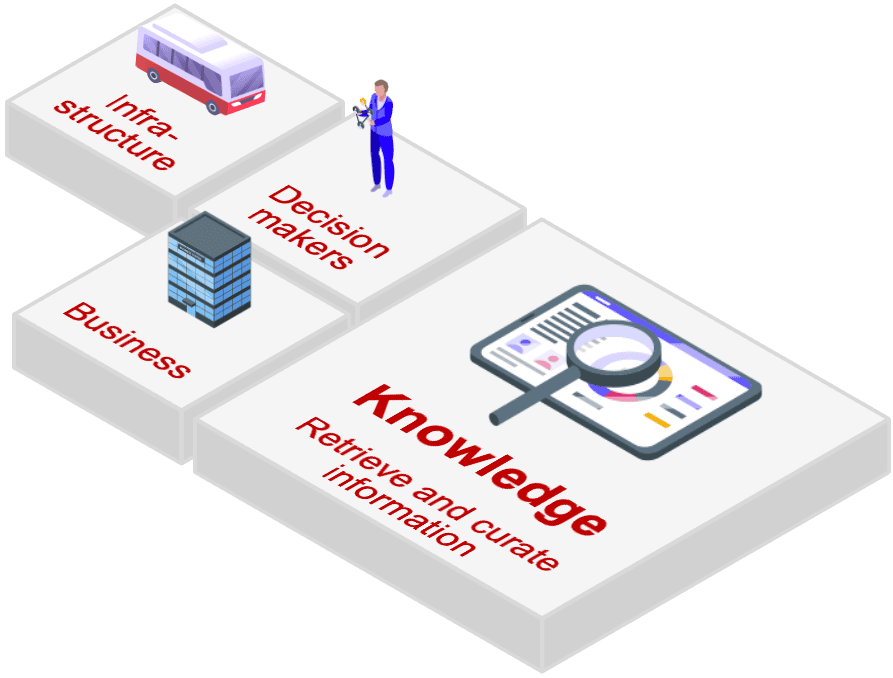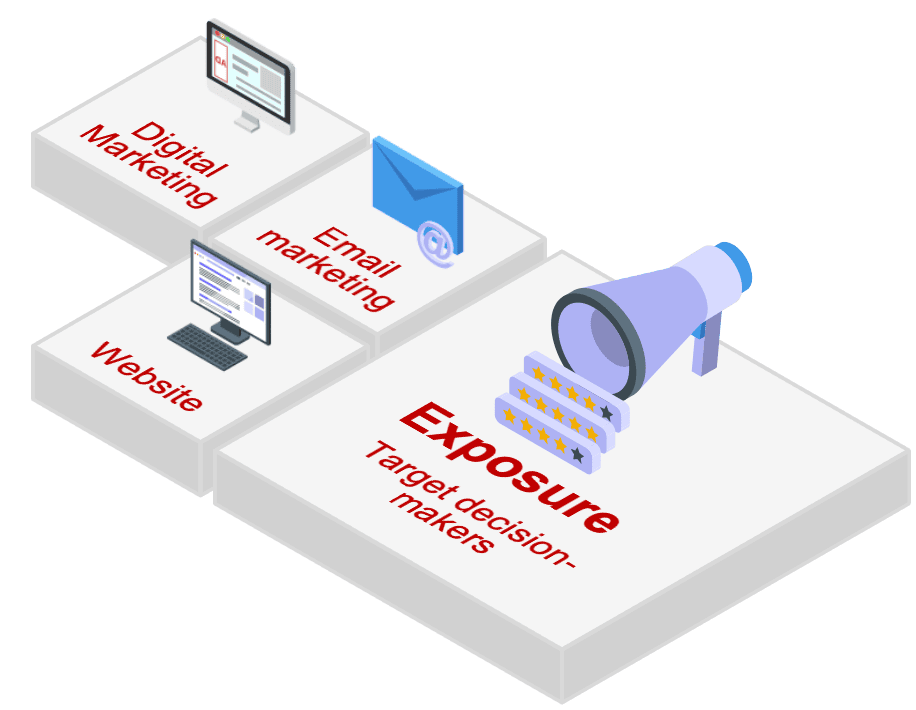A market driven approach to sales and marketing for B2B complex, long cycle, institutional sales
A cohesive and data-driven approach to gain knowledge on your customers, deliver strategic messages by creating exposure to decision makers and improve the sales flow. Leverage CRM, orchestrate sales and digital marketing.
The context of B2B sales process for large-scale institutional products
Business to Business (B2B) sales process for large-scale institutional products involve long cycles, formal tender processes, and multiple stakeholders, requiring strategic approach. Selling complex products requires navigating a multilayered sales process, often involving:
- Extended sales cycles: Ranging from several months to years.
- Formal tender processes: Competitive bidding with strict requirements.
- Multiple stakeholders: Decision-making involves technical, financial, and operational teams
This complexity requires an orchestrated approach that:
- Builds insights on your customers pain points and requirements.
- Creates the arguments that differentiate your products and services.
- Targets interactions with stakeholders with the appropriated messages to address their needs.
- Relentlessly manages the sales process.

Integrating Sales and Marketing for long-cycle B2B success
Effective B2B sales and marketing integration requires a coordinated, data-driven approach. By strategically designing the customer journey and leveraging Zoho tools, companies can ensure consistency, streamline processes, and maximize impact.
Key takeaways are:
- Strategic Alignment: Align marketing, sales, and product teams to deliver a cohesive and tailored value proposition that resonates with client needs.
- Patience and Persistence: Long sales cycles require sustained engagement, relationship-building, and continuous value demonstration.
- Adaptability: Flexibility in navigating complex procurement processes and responding to client feedback ensures responsiveness and competitiveness.
We consider four core levers of integration: Sales flow, Knowledge, Exposure and Messages.
Sales flow
A structured, consistent process is essential to guide potential customers from initial contact to final sale.
- Zoho CRM: Document the sales cadence and streamline engagements.
- Zoho Campaigns: Establish touchpoints and reinforce brand and product recognition.
- Zoho Social: Interact and answer customer questions.

Knowledge

Understanding your customers’ business, decision-makers, and infrastructure is crucial to improve products, services, and marketing strategies.
- Zoho CRM & Zoho Forms: Capture detailed client information, including decision-makers roles, goals, pain points and sentiments. Capture business details including financial, organization, strategies and requirements. Capture infrastructure information, including products using both from us and our competitors. This data collection can feed other internal analytics and tools.
- Zoho Social: Monitor social media for customer sentiment and market trends on multiple platforms including LinkedIn.
This data enhances internal analytics, guiding strategic decisions and improving customer targeting.
Exposure
Target decision-makers with relevant messages tailored to their stage in the sales cycle.
- Prospecting Phase: Build brand and product awareness using Zoho Campaigns, social media marketing, and digital advertising.
- Tender and Negotiation Phase: Highlight key differentiators like quality, innovation, and service through email campaigns, targeted ads, and detailed landing pages.

Use multiple tools to create exposure:
- Zoho Campaigns: Target messages with email marketing.
- Zoho social: Social media marketing and interactions.
- Google ads and other platforms advertising: Place ads and targeted messages.
- Website landing pages: Message focused landing pages to provide detailed arguments.
Example: A decision-maker in a tender may receive emails showcasing product quality, reinforced by ads that link to landing pages with technical case studies.
Messages

Develop a portfolio of strategic, multi-channel messages tailored to specific moments in the sales process.
Message themes might include quality, innovation, value for money, design, ancillary services, and more.
Benefits of integration
By coordinating sales and marketing through a multi-channel approach, companies can:
- Enhance visibility and credibility.
- Build stronger relationships with key stakeholders.
- Differentiate their offerings effectively.
- Secure long-term, high-value contracts.
This strategic integration establishes the company as a trusted partner in competitive B2B markets.By leveraging a coordinated, multi-channel strategy, companies can position themselves as trusted partners and secure long-term contracts in competitive B2B markets.
How can we help you improve your sales and B2B marketing? Send us an email with your unique challenge today!


